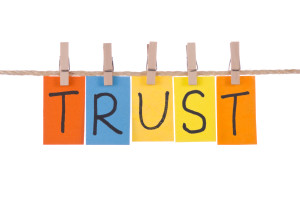
Trust in a team is like an engine in a car. Without trust, there is no power to drive the team to achieve its goals and fulfil its purpose. Without trust, you cannot have high quality conversations – the essential fuel in any team and an absolute pre-requisite to becoming a high performing team.
My trusted colleague, Stephen M.R. Covey (New York times best-selling author of many books on trust, including “The Speed of Trust”) sums up the power of trust in two elegant equations:
High Trust = High Speed + Low Cost
When the trust is high, it is faster to get things done, and the costs (financial, mental, emotional) are a lot lower compared to low trust.
Low Trust = Low Speed + High Cost
Conversely when the trust is low, it takes longer to get things done and the costs (financial, mental, emotional) are a lot higher compared to high trust.
So how does one build greater trust in a team? Here are some practical suggestions:
SELECT DILIGENTLY
1. Team selection is paramount. In selecting the right team, consider not only the skills and motivation to do the role, but also the ability to work constructively within a team environment.
INCREASE AWARENESS OF SELF AND OTHERS
2. Have real conversations to learn about each other at a deeper level: e.g. conversations about personal histories, motives/drivers, fears, leadership styles, how to get the best out of me, how best to build/destroy trust with me etc .
3. Use profiling instruments (e.g. HBDI, MBTI, DISC, Hogan etc) to not only fast-track learning about each other, but also create a powerful common language that can help in increasing acceptance and de-personalising differences. My favourite technology in this respect is HBDI (Herrmann Brain Dominance Instrument) – it is both simple and profound, with many practical applications within a team.
4. Create opportunities to provide feedback to each other in a collective setting – to acknowledge each others’ strengths and contributions and also offering suggestions on how to get better
CREATE A LANGUAGE OF TRUST
5. Leverage best practice models (e.g. Stephen’s Covey “Speed of Trust”, David Maister’s “The Trusted Advisor” etc) to create a language around trust.
6. Formally agree (discuss and document) rules of play i.e. How will we work together as a team? Execute diligently against these agreements, calibrating regularly and making adjustments as necessary.
7. Create an environment where vulnerability is seen as a source of strength and courage rather than a sign of weakness e.g. asking for help, sharing challenges and limitations etc is both expected and appreciated.
INVEST TIME TOGETHER
8. To work on important content, including rolling up sleeves to co-create critical team deliverables. It is also important to have time together where it’s not all about work and people can socialise in a more relaxed environment e.g. over dinner etc.
9. Establish a buddy System, e.g. each person is paired with another member of the team and they use each other as confidantes to check in, bounce ideas, get advice etc
10. Set a standard where personal conflicts with each other are resolved quickly. When this doesn’t happen, resentment builds up and trust erodes quickly.
What else would you add to the above list?
